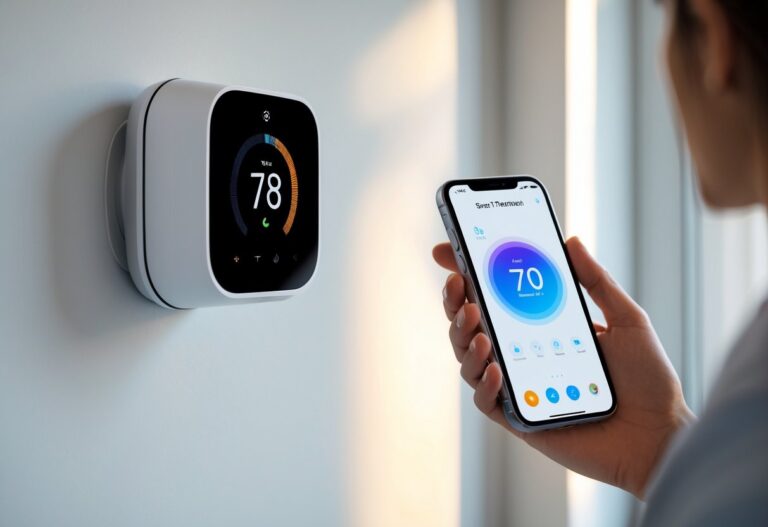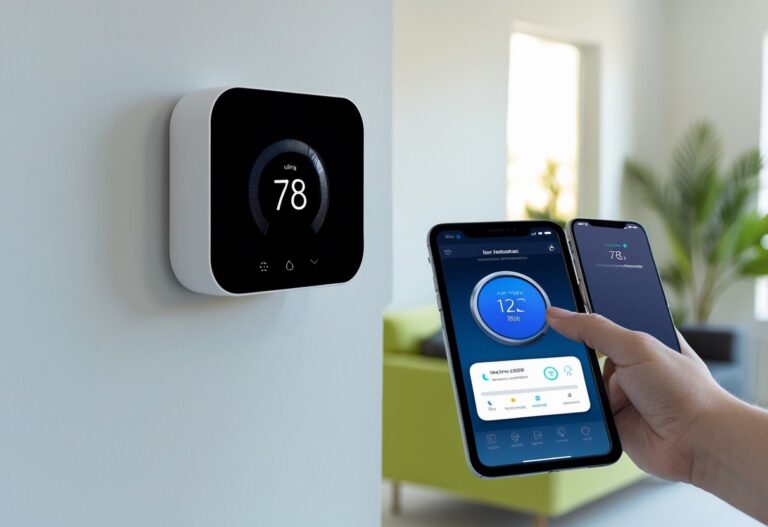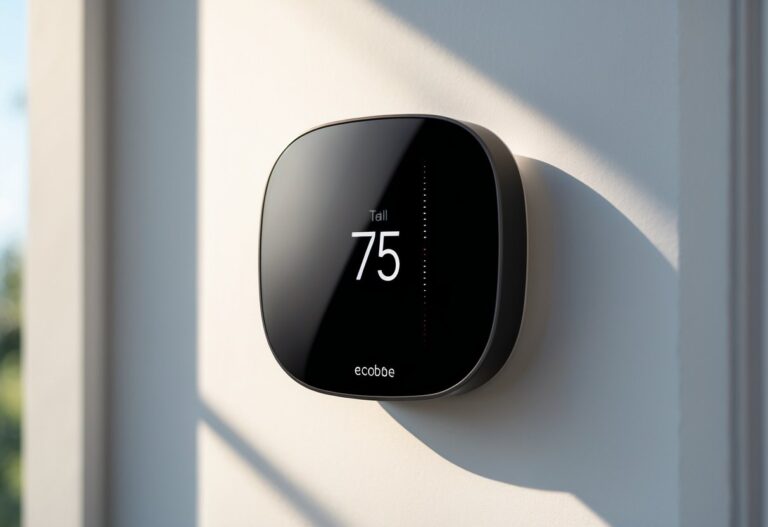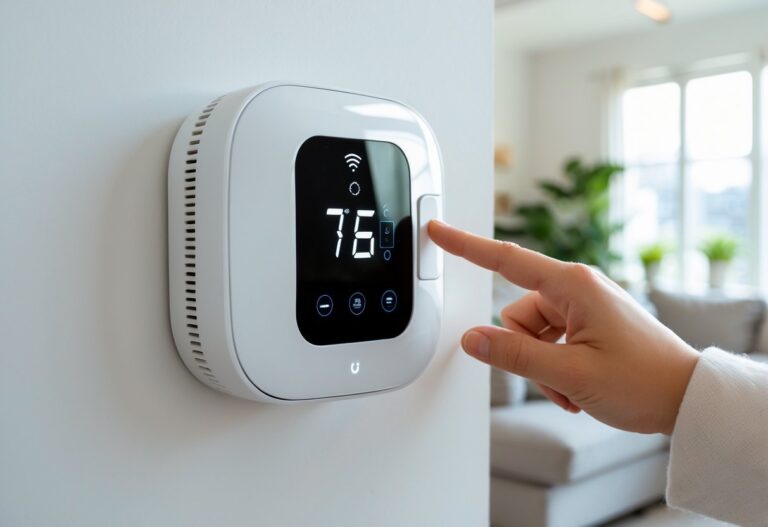Wondering if switching to a smart thermostat will actually help your wallet? Smart thermostats can save you money by using technology to automatically adjust your home’s temperature, which often leads to lower energy bills. Many homeowners find these devices helpful because of features like smart scheduling, occupancy sensors, and remote control from your phone.
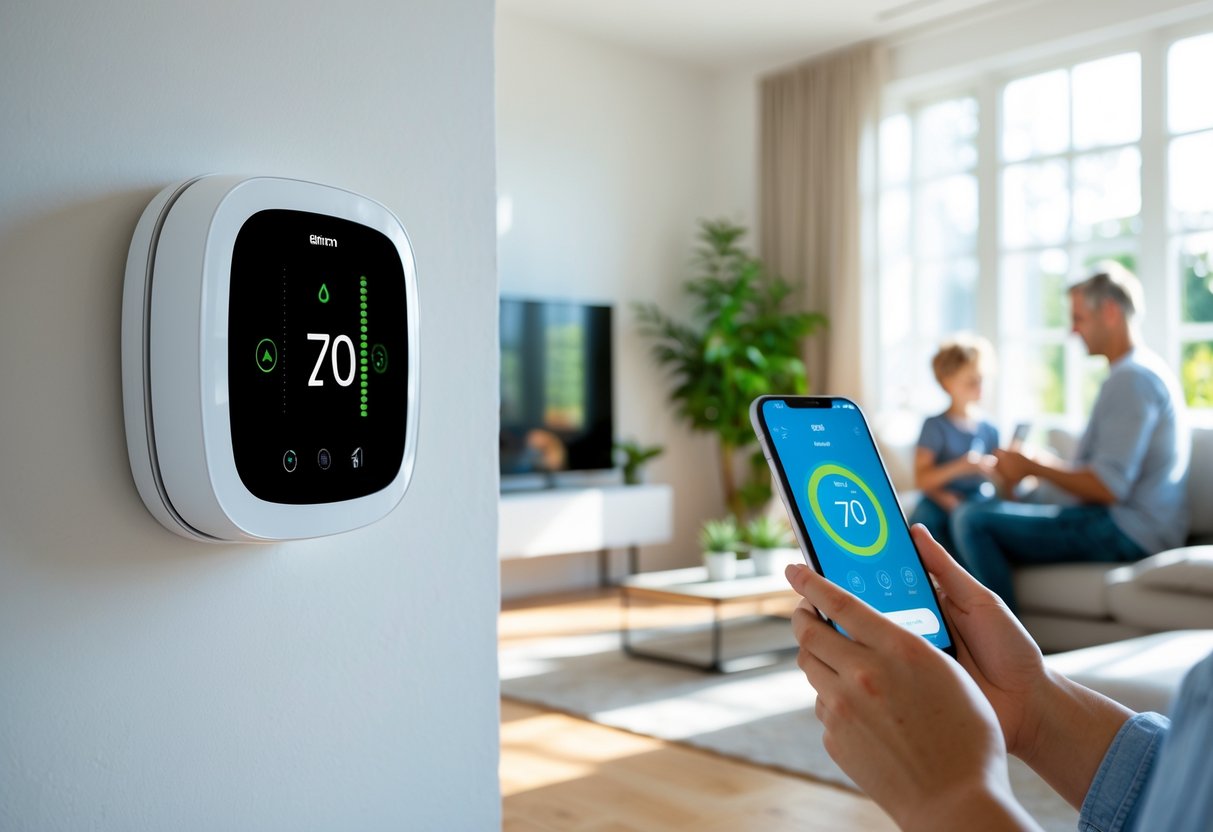
But how much you save depends on your habits, your home, and how you use the smart thermostat. With the right settings and a little attention, you may notice real changes in your monthly energy costs. Learning about these features and making small changes to your routine could mean a more comfortable home with extra savings.
Key Takeaways
- Smart thermostats help lower energy bills through automated temperature control.
- Your actual savings depend on your home and how you use the device.
- Using features like scheduling and occupancy sensing increases your chance to save.
How Smart Thermostats Can Help Save Money
Smart thermostats use technology to adjust heating and cooling to fit your daily life. By learning your habits and automatically changing settings, they help use less energy and can lower your monthly bills.
Understanding Energy Savings
Smart thermostats can make a big difference in how much energy you use. Unlike traditional thermostats, they use sensors and software to know when no one is home. This allows them to set the temperature at a more efficient level until someone returns.
You also get features like scheduling and remote control through your phone. For example, you can turn the heat down from work or set your cooling system to start before you get home. Some smart thermostats can even use weather forecasts to adjust your system, so it runs more efficiently.
By only using energy when needed, smart thermostats reduce waste. This can mean lower monthly bills, especially if you have regular routines and remember to use the features your device offers.
Comparing Smart and Programmable Thermostats
Programmable thermostats let you set a fixed schedule for heating and cooling. You pick what temperature you want for each part of the day. This can help save money if you stick to a routine, but it requires you to set it up and remember to change it when your schedule changes.
Smart thermostats go further. They learn your preferences over time, so they adjust settings automatically even if your routine changes. Some can tell when you leave the house and change the temperature for you. Others suggest changes that could help you use less energy.
A smart thermostat is usually easier to control because you can use an app on your phone or voice commands. This makes it more likely that you’ll actually use features that save energy and money.
Reducing Utility Bills With Smart Controls
Smart thermostats use smart controls to save you money each month on your utility bills. Features like geofencing adjust your system when you’re away based on your phone’s location. This cuts down on energy used when you don’t need it.
Some models use energy reports to show you how much energy you’re using and offer tips to help you use less. This lets you make small changes that add up to real savings. Smart thermostats also work well with other smart home devices, like sensors, to make sure rooms aren’t heated or cooled when they don’t need to be.
By giving you real-time control over your heating and cooling, you can react quickly to weather changes or unexpected schedule changes. These actions help you avoid wasting energy, leading to lower utility costs each month.
Key Features That Contribute to Cost Savings
Smart thermostats use advanced technology to help you reduce energy usage while keeping your home comfortable. Their most effective money-saving features are schedule learning, automation, remote access, and smart home integrations.
Learning Schedules and Automation
A smart thermostat can learn your daily routines, like when you wake up or leave for work. Over time, it automatically adjusts heating and cooling settings to fit your schedule. You don’t need to remember to manually change the temperature, which reduces wasted energy.
Programmable thermostats allow you to set temperature changes based on time and day. Smart versions take this a step further by using sensors and machine learning. They can detect when no one is home or when everyone is asleep, so they lower heating or cooling to use less energy.
This automatic adjustment can prevent the system from running when it’s not needed. By matching your energy usage to your needs, a smart thermostat helps improve energy efficiency and can lower your utility bills.
Remote Control and Smart Integrations
You can control a smart thermostat from your phone, tablet, or computer, even when you are not at home. If your plans change, you can quickly adjust the temperature to save energy. For example, if you are coming home late, you can delay heating or cooling to avoid unnecessary energy usage.
Many smart thermostats work with other smart devices like voice assistants or room sensors. This integration lets you set up routines, such as lowering the heat when you leave the house or adjusting cooling based on the temperature in different rooms.
These features help you avoid heating or cooling empty spaces. They also make it easier to monitor how much energy you use and how small adjustments can add up to cost savings.
Table: Key Remote Features
| Feature | Benefit |
|---|---|
| Remote Access | Control thermostat anywhere |
| Smart Integrations | Automated energy adjustments |
| Energy Usage Reports | Track and optimize consumption |
Factors That Influence Savings Potential
Smart thermostats do not guarantee the same amount of savings in every home. The condition of your HVAC system and the state of your home’s insulation are especially important to consider.
Type and Condition of HVAC System
Your HVAC system’s age, efficiency, and type have a big impact on how much you can save with a smart thermostat. If you have a new, energy-efficient system, you may see steady but smaller gains. Older systems that run longer or struggle to maintain set temperatures can waste more energy, so optimizing them with a smart thermostat may lead to higher savings.
Central heating and cooling systems, like furnaces and heat pumps, respond more effectively to schedule changes set by a smart thermostat. If your HVAC system is poorly maintained, with clogged filters or leaky ducts, energy is still wasted even if you use smart controls. Regular maintenance, such as cleaning or replacing air filters and checking ducts, should go along with any smart upgrades.
The compatibility of your HVAC system with the specific smart thermostat model also matters. Not all thermostats work with all systems. Always check the manufacturer’s requirements before buying.
Home Insulation and Air Filters
Well-insulated homes keep warm or cool air from escaping. If your home has poor insulation, a smart thermostat will have to work much harder to keep the temperature stable, which limits your savings. Adding insulation to attics, walls, windows, and doors reduces the need for frequent heating and cooling.
Clean air filters allow your HVAC system to move air efficiently. Dirty or clogged filters reduce air flow, forcing your system to use more energy. Changing your air filters every 1-3 months helps your system work well with a smart thermostat’s controls.
Checklist:
- Check insulation in all areas, especially the attic.
- Replace or clean air filters regularly.
- Fix drafts around doors and windows.
Without good insulation and clean filters, even the best smart thermostat will not save as much energy as possible.
Tracking and Improving Home Efficiency
Using a smart thermostat helps you better understand and manage your home’s energy usage. You can use specific features, like energy reports and long-term monitoring, to make clear changes that improve efficiency and save on your energy bills.
Using Energy Reports to Optimize Performance
Smart thermostats often provide energy reports that show patterns in your heating and cooling use. These reports use easy-to-read graphs and charts to break down when your system works the hardest. You can see days or hours when you use the most energy.
By checking these reports, you can spot trends, like high energy use when no one is home. This information lets you change your thermostat settings or make a new schedule. Some systems even offer tips for saving money based on your data.
Many smart thermostats also send alerts through email or apps if something unusual happens. For example, if your energy use suddenly jumps, you’ll get notified. This helps you react quickly and prevent wasted energy.
Energy reports can also compare your home’s efficiency to others, which gives you a better sense of your progress. This makes it easy to set and achieve realistic goals.
Monitoring Long-Term Energy Usage
Smart thermostats store long-term energy usage data, letting you track how changes you make affect your monthly bills. Looking at past months and seasons gives you a clear idea of what works best for your home.
Keeping an eye on trends helps you spot problems, like your system using more energy during certain times of year. You can also notice the impact of weather or household habits on your overall efficiency.
Many devices allow you to export your data to a spreadsheet or integrate with other smart home tools. This can make it easier to share your results with professionals, like your energy provider or HVAC technician, if you want more advice.
Some brands even provide suggestions for upgrades or maintenance based on your long-term use. This can lead to further savings and improved comfort throughout the year.
